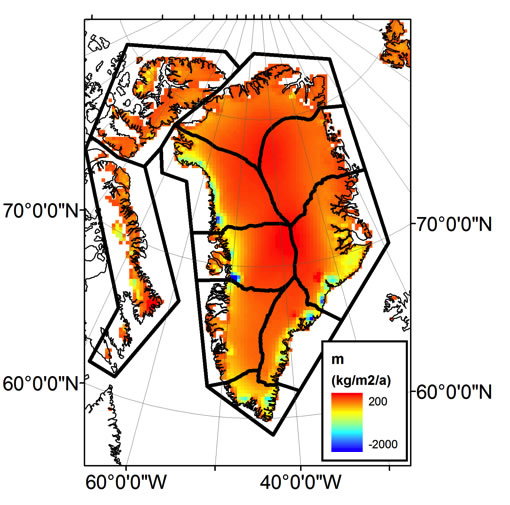Waleed Abdalati

Ph.D. University of Colorado (Boulder), 1996
Director of CIRES
Professor of Geography
E-mail: waleed.abdalati@colorado.edu
Office: Ekeley W245
Phone: 303-492-5086
Web: Earth Science Observation Center
Research Interests
My research interests are in the use of satellite and airborne remote sensing techniques, integrated with in situ observations and modeling, to understand how and why the Earth's ice cover is changing, and what those changes mean for life on Earth. In particular, my research focuses on the contributions of ice sheets and high-latitude glaciers to sea level rise and their relationship to the changing climate. Toward that end, I have been heavily involved in the development of NASA's Ice Cloud and land Elevation Satellite (ICESat) and its successor, ICESat-II, and I have worked on cryospheric applications of various other satellites and aircraft instruments. Most of my research is supported by NASA, where I worked as a scientist for 12 years, before joining CIRES. In 2011, I returned to NASA on a two-year assignment as the agency’s Chief Scientist, serving as principal adviser to the NASA Administrator on NASA scienceprograms, strategic planning, and the evaluation of related investments.
Current Research: Using satellites and in situ measurements to study polar ice
My group works with space-based, airborne, and in situ observations to study changes in Earth’s glaciers and ice sheets, with a focus on three areas. The first is the development of methods for determining how much meltwater is stored in—and subsequently lost from—melt lakes on the surface of the Greenland ice sheet. This meltwater has significant implications for the speed at which the ice sheet flows toward the sea because the meltwater can reduce friction between the ice and the bedrock on which it rests and also changes the deformation properties of the ice as the warm meltwater penetrates into the ice. We have produced the first-ever detailed and validated maps of supraglacial lake volumes from high-resolution imagery across a large region in Greenland, producing a critical tool for understanding the ice sheet’s hydrology and its contributions to sea level rise.
The second research area has focused on understanding the nature of compaction of the near-surface firn (snow) on the Greenland ice sheet to improve the interpretation of satellite and aircraft altimetry observations of ice-sheet-thickness changes. Compaction measurements from stations we installed on the ice sheet surface in 2013 have shown that local melt in summer 2013 released large amounts of latent heat into the firn over several months following the end of the melt season, increasing annual compaction rates by 8 percent. This seemingly small change during this year of modest melt has a very large impact on converting elevation changes to mass changes, and our ability to quantify it represents a significant step forward in addressing the largest uncertainty component of altimetry-derived sea level contributions from Greenland.
Finally, we combine data from NASA’s Gravity Recovery and Climate Experiment (GRACE), Ice Cloud and land Elevation Satellite (ICESat), and other missions to assess the spatial distribution of mass loss from the Greenland Ice Sheet, its peripheral glaciers and ice caps, and the Canadian ice caps with unprecedented detail at 26-kilometer spatial resolution (see figure). These areas of research are fundamental to our ultimate overarching objective of determining how and why Earth’s glaciers and ice sheets are changing and what those changes mean for life on Earth.

Ice mass balance across the Canadian Arctic and Greenland at 26-km2 resolution during the period September 2003 to October 2009, inferred from a combination of space-based gravimetry, altimetry, and optical measurements. Figure credit: W. Colgan/CIRES
Publications
Click here for a list of publications »
Honors and Awards
- Selected to serve as NASA Chief Scientist, 2011–2012
- NASA GSFC Center Director’s Team Recognition Award, 2007
- American Institute of Aeronautics and Astronaustics Space Systems Award, 2006
- National Aeronautics and Space Administration Exceptional Service Medal, 2004
- NASA Group Achievement Award, ICESat Science Team, 2004
- NASA Office of Earth Science Award, 2003
- NASA Group Achievement Award, Honor Award Team 2003
- NASA Office of Earth Science Terra Peer Award, 2002
- NASA Office of Earth Science Award, 2002
- NASA Office of Earth Science Award, 2001
- Presidential Early Career Award for Scientists and Engineers, 1999
- Tau Beta Pi National Engineering Honor Society (since 1985)

